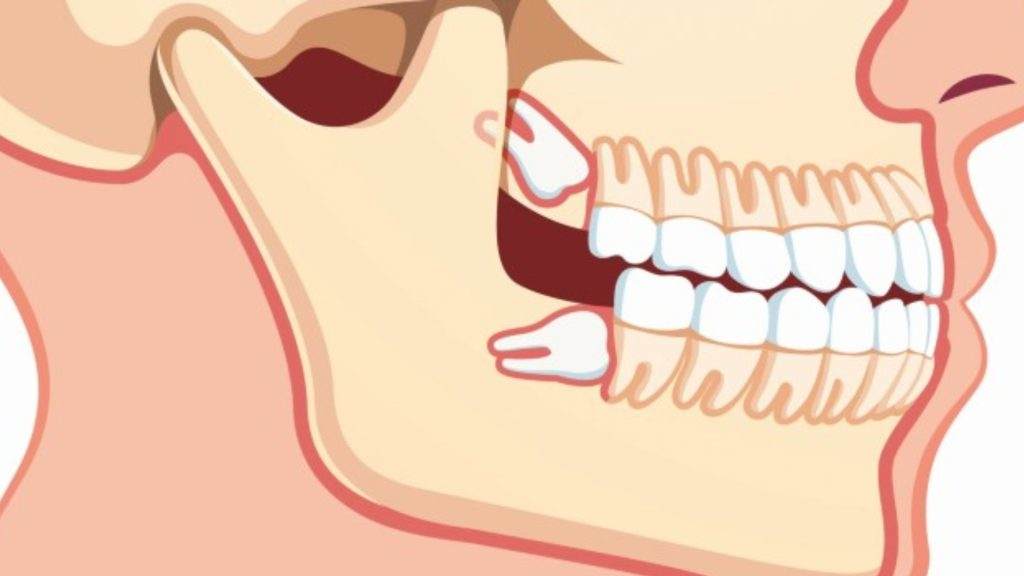The extraction of wisdom teeth, or third molars, is a common dental procedure performed to alleviate pain, prevent dental issues, and ensure overall oral health. However, there are misconceptions and concerns surrounding the process, including whether it involves the dislocation of the jaw. This article aims to clarify the procedure of wisdom tooth extraction, the techniques involved, and dispel any myths about jaw dislocation associated with the procedure.
Understanding Wisdom Teeth Extraction
Wisdom teeth are the final set of molars that typically emerge in late adolescence or early adulthood. Due to their late arrival and often limited space in the mouth, they can become impacted (unable to fully erupt) or cause crowding, pain, infection, and damage to adjacent teeth. In such cases, extraction is recommended to prevent further complications.
The Procedure of Wisdom Tooth Extraction
Wisdom tooth extraction is a routine dental procedure that can be performed by a general dentist or an oral surgeon, depending on the complexity of the case. The process generally involves several steps:
Initial Assessment: The dentist or oral surgeon will conduct a thorough examination, often including X-rays, to assess the position of the wisdom teeth, their proximity to nerves and other structures, and determine the best approach for extraction.
see also: What Can Help with Wisdom Teeth Pain?
Anesthesia: Local anesthesia is typically administered to numb the extraction site and ensure the patient’s comfort during the procedure. In some cases, sedation or general anesthesia may be used for patients who are anxious or for more complex extractions.
Extraction: Using specialized instruments, the dentist or oral surgeon will gently loosen the tooth from its socket in the jawbone and carefully remove it. If the tooth is impacted or partially erupted, a small incision may be made in the gums to access the tooth more effectively.
Closure: Once the tooth is removed, the extraction site may be stitched closed to promote healing. Gauze is placed over the extraction site to control bleeding, and the patient is given post-operative instructions.
Addressing The Myth of Jaw Dislocation
One of the common misconceptions surrounding wisdom tooth extraction is the fear of jaw dislocation during the procedure. However, it’s important to clarify that jaw dislocation is not a routine occurrence during wisdom tooth extraction. Here’s why:
Anatomy and Technique: Dentists and oral surgeons are trained to perform extractions using precise techniques that minimize trauma to surrounding tissues. They are aware of the anatomy of the jaw joint (temporomandibular joint or TMJ) and take care to avoid excessive manipulation that could lead to dislocation.
Gentle Maneuvering: During the extraction process, the dentist or oral surgeon uses controlled movements to loosen and remove the tooth from its socket. There is no need for forceful manipulation that could cause dislocation of the jaw joint.
Patient Positioning: Patients undergoing wisdom tooth extraction are positioned comfortably to allow the dentist or oral surgeon optimal access to the extraction site while ensuring the jaw remains stable.
Post-Operative Care: After the extraction, patients are advised to follow post-operative instructions carefully, including avoiding strenuous activities and eating soft foods to allow the extraction site to heal properly. These precautions further reduce the risk of complications such as jaw dislocation.
Managing Post-Operative Discomfort
Following wisdom tooth extraction, it is normal to experience some swelling, discomfort, and mild bleeding at the extraction site. Dentists typically recommend over-the-counter pain relievers, applying ice packs to the face to reduce swelling, and adhering to a soft diet initially. It’s essential for patients to attend follow-up appointments to ensure proper healing and address any concerns.
Conclusion
In conclusion, the extraction of wisdom teeth is a routine dental procedure aimed at alleviating pain and preventing oral health complications. Despite concerns and myths surrounding the procedure, jaw dislocation is not a common occurrence during wisdom tooth extraction. Dentists and oral surgeons are trained to perform extractions using precise techniques that prioritize patient comfort and safety while minimizing risks.
If you have concerns about wisdom tooth extraction or any aspect of your dental health, it is crucial to consult with a qualified dental professional. They can provide personalized guidance, address your questions, and ensure you receive the appropriate care for your oral health needs. Remember, maintaining open communication with your dentist or oral surgeon throughout the process can help alleviate anxiety and ensure a positive experience with wisdom tooth extraction.
FAQs
Can your jaw get messed up from wisdom teeth removal?
Wisdom teeth removal typically does not cause long-term issues with the jaw, but some temporary discomfort or changes can occur. Swelling, bruising, and stiffness are common after surgery. In rare cases, complications like nerve damage or infection can affect the jaw, but these are uncommon and usually manageable with proper care.
Does your jaw shift after wisdom teeth removal?
Jaw shifting after wisdom teeth removal is not typical. However, the procedure can temporarily affect how your bite feels due to swelling or healing processes. Any perceived changes in jaw alignment usually resolve as the area heals. Permanent shifts in the jaw are rare and generally occur only if there were pre-existing orthodontic or skeletal issues.
Does wisdom teeth removal change jaw shape?
Wisdom teeth removal does not change the shape of your jaw. The procedure removes teeth that are often at the back of the mouth and not involved in the overall structure or appearance of the jawline. Any changes in facial shape or jawline are usually temporary and due to swelling, and the face returns to its normal shape once the swelling subsides.

